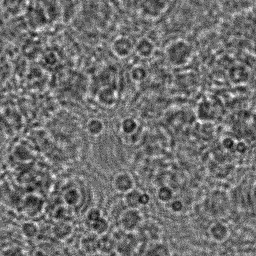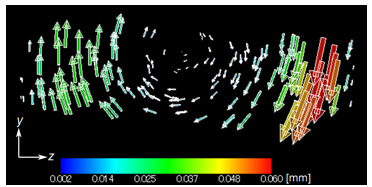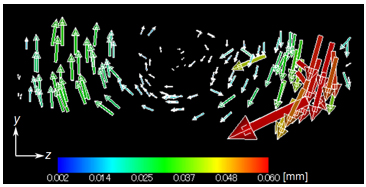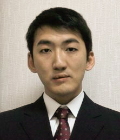Newsletter 2015.2 Index
Theme : "The Conference of Fluid Engineering Division"
|
Digital holographic particle measurement using deconvolution and its application
Yuto ASAI Shigeru MURATA Yohsuke TANAKA
|
Abstract
Particle image velocimetry (PIV) and particle tracking velocimetry (PTV) are widely used for fluid flow measurements.
The velocity distributions of fluid flow are measured by tracking tracer particle patterns or each particle, so PIV and PTV are based on particle measurement techniques in fluid engineering.
These measurement techniques are usually employed for analyzing two-dimensional fluid flow.
Therefore, to analyze three-dimensional phenomena such as real fluid flow, it is necessary to measure three-dimensional particle distribution.
Digital holography is a monocular measurement technique to record and reconstruct three-dimensional object.
The technique is used to measure small objects such as particles.
Consequently, the digital holographic particle measurement can be applied to three-dimensional PIV or PTV.
However in digital holography, the measurement accuracy in depth is reduced because a reconstructed particle image is elongated along the depth axis.
In order to overcome this difficulty, deconvolution technique was employed to suppress the particle image elongation.
The deconvolution technique is a process to calculate the particle distribution by regarding reconstructed particle images as convolution of the particle distribution and point spread function in three-dimensional space.
This paper evaluates the performance of digital holographic particle measurement using the deconvolution technique for measuring three-dimensional flows.
We used this deconvolution technique to detect the particle displacement in order to confirm its accuracy in suppressing the particle elongation.
In numerical simulation, the measurement accuracies with and without the deconvolution technique are evaluated within the cubic cavity flow model.
This research shows that using this deconvolution technique successfully suppresses particle elongation and thereby improves the measurement accuracy of particle displacement within the cubic cavity flow model.
Key words
Flow measurements, Particle measurement, Digital holography, Deconvolution
Figures
 |
 |
| Fig. 1 Principle of digital holography | |

Fig. 2 Cavity flow model

ツ(a)True vector

(b)Without deconvolution

(c)With deconvolution
Fig. 3 Comparison of displacement vectors




